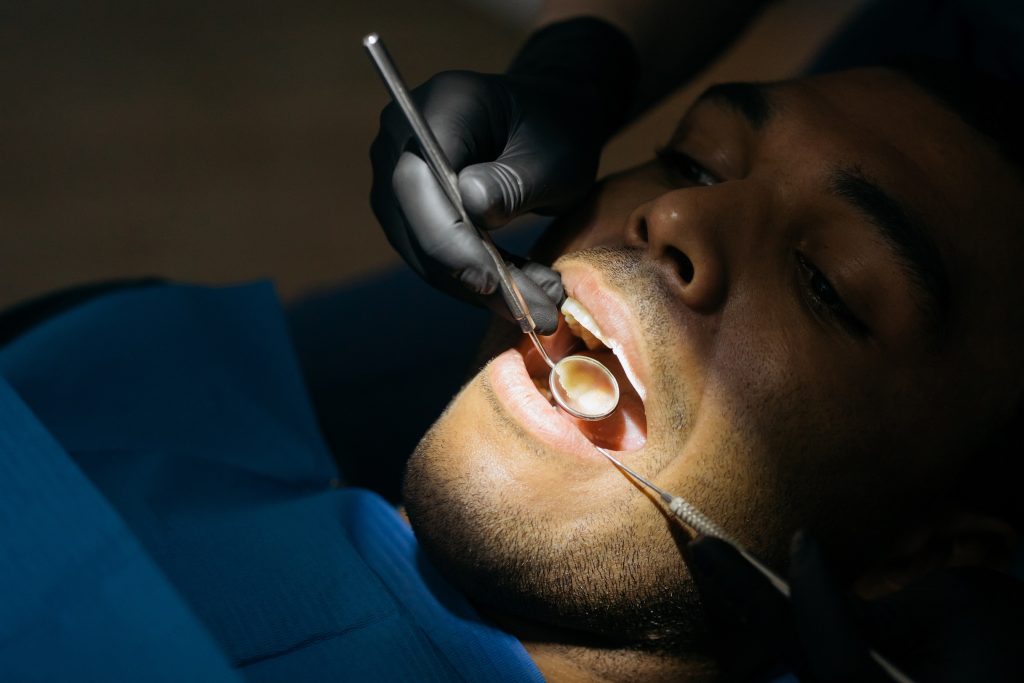What are Tooth Decay? 5 Stages of Tooth Decay
Tooth decay is a disease in which harmful bacteria can invade the teeth. When a tooth is infected, it may cause pain or swelling. These symptoms can extend to the jaw and facial area. Depending on the severity of the infection, the patient may need to see a dentist.
The most common symptom is a toothache. Other signs include white spots on the teeth. This is due to plaque whittling away the enamel.
If left untreated, the infection can spread into the dentin and pulp. It can also cause fever and pain. People with tooth decay should visit a dentist at least once a year.
A dentist can diagnose tooth decay by probing the tooth. He can also take x-rays if needed.
Fluoride is a good treatment to help reverse early tooth decay. There are fluoride gels, foams, and varnishes available. However, the most effective treatment is to keep the tooth healthy with regular brushing and cleaning.
Brush your teeth at least twice a day. Also, floss your teeth each night. For younger children, limit sugary snacks. In addition to regular brushing and cleaning, keep your teeth healthy by eating a balanced diet. You can also use a fluoride mouthwash to help treat tooth decay.
If you or your child has tooth decay, you should visit a dentist. Your dentist can determine the extent of the problem and prescribe the right treatment.
Most cases of tooth decay are preventable. By taking good care of your teeth, you can keep your teeth for a lifetime.
5 Stages of Tooth Decay

If you are looking for information on the different stages of tooth decay, this article is for you. You will learn about the first signs, treatment, Dentin layer, abscess, and white spots.
White spots
White spots on teeth are usually a sign of tooth decay. They can also be caused by poor dental care, dental trauma, or nutritional issues. This is a condition that is easy to treat.
To prevent white spots from happening, brush your teeth two times a day and floss at least once. Brushing regularly and using a soft-bristled toothbrush will help you to keep your teeth clean.
You can also avoid these spots by eating a lot of calcium-rich foods. Calcium is essential to teeth health. Tooth enamel needs this mineral to protect your teeth from the corrosive forces of acidic foods and bacterial plaque.
Some medications can also affect your teeth’s appearance. For example, amoxicillin can weaken your enamel, which can cause white spots on your teeth. However, you should only use a very small amount of the medication.
First sign
Tooth decay is a disease that can impact your oral and overall health. It can cause damage to the deep layers of your teeth and even affect how you smile.
Early tooth decay can be reversible. However, once it causes pain, it is hard to reverse. Getting regular checkups with your dentist is the best way to detect it early.
Tooth decay starts when acids from plaque and sugars attack your teeth. The minerals in your saliva help rebuild the enamel and prevent further decay.
Brushing and flossing your teeth twice a day will protect your teeth from cavities. If you don’t, you may be at risk for developing an abscess, a painful condition in which an infection infects the bone. An abscess can be fatal if not treated right away.
Dentin layer

A tooth’s dentin layer is a part of the tooth underneath the enamel. It contains tiny tubes, or tubules, that connect to the nerves inside the tooth. These tubes allow the nerves to stimulate cells.
Decay in the dentin layer is usually caused by bacteria that have invaded the tooth. The bacteria produce acid, which erodes the tooth’s enamel. This can cause pain and sensitivity.
Dentin is a softer layer of tooth tissue than enamel. Dentin also contains small blood vessels and nerves. The tooth’s pulp chamber can become inflamed and infected when it becomes damaged.
Only the outer enamel layer is affected during the early stages of tooth decay. This stage is known as the first stage. At this stage, the only way to prevent further damage is by taking proper care of your teeth. Regular dental visits are essential to keep your teeth in good shape.
Abscess formation
Tooth decay is a common condition that can affect children. When you have tooth pain, it is important to seek treatment quickly. This is because the condition may spread to the bones in your jaw. Without treatment, the infection could cause the loss of your tooth.
Dental abscesses are a painful condition that develops when the bacteria in the tooth spreads to the surrounding tissue. These symptoms include pain, a foul taste in the mouth, and difficulty chewing and swallowing. They can also affect the bones in the jaw and head.
Abscesses can occur if you are not keeping up with your dental hygiene. Plaque buildup can lead to enamel decay. You should brush and floss your teeth regularly. Using a soft toothbrush can prevent irritation to your gums.
Treatments
Tooth decay is a common dental problem. It can cause serious problems in the long run if left untreated. However, several treatments can help you to fix your teeth.
One of the first signs of tooth decay is the appearance of white spots. This is because plaque whittles away at the enamel. You can avoid this by brushing and flossing at least twice a day.
There are two types of enamel on the surface and dentin below. The enamel is the hardest part of the tooth. When it is exposed to the acid produced by plaque and sugar, it breaks down, causing a cavity.
Dental crowns or fillings can be used to cover the affected area and restore the tooth’s aesthetics. In addition, fluoride treatment can reverse the effects of plaque. Fluoride is a substance found in many kinds of toothpaste and water supplies.
If you are passionate about writing about Health topics. You can search “Write for Us Health” in search engines. We’ll welcome you to write for us.

